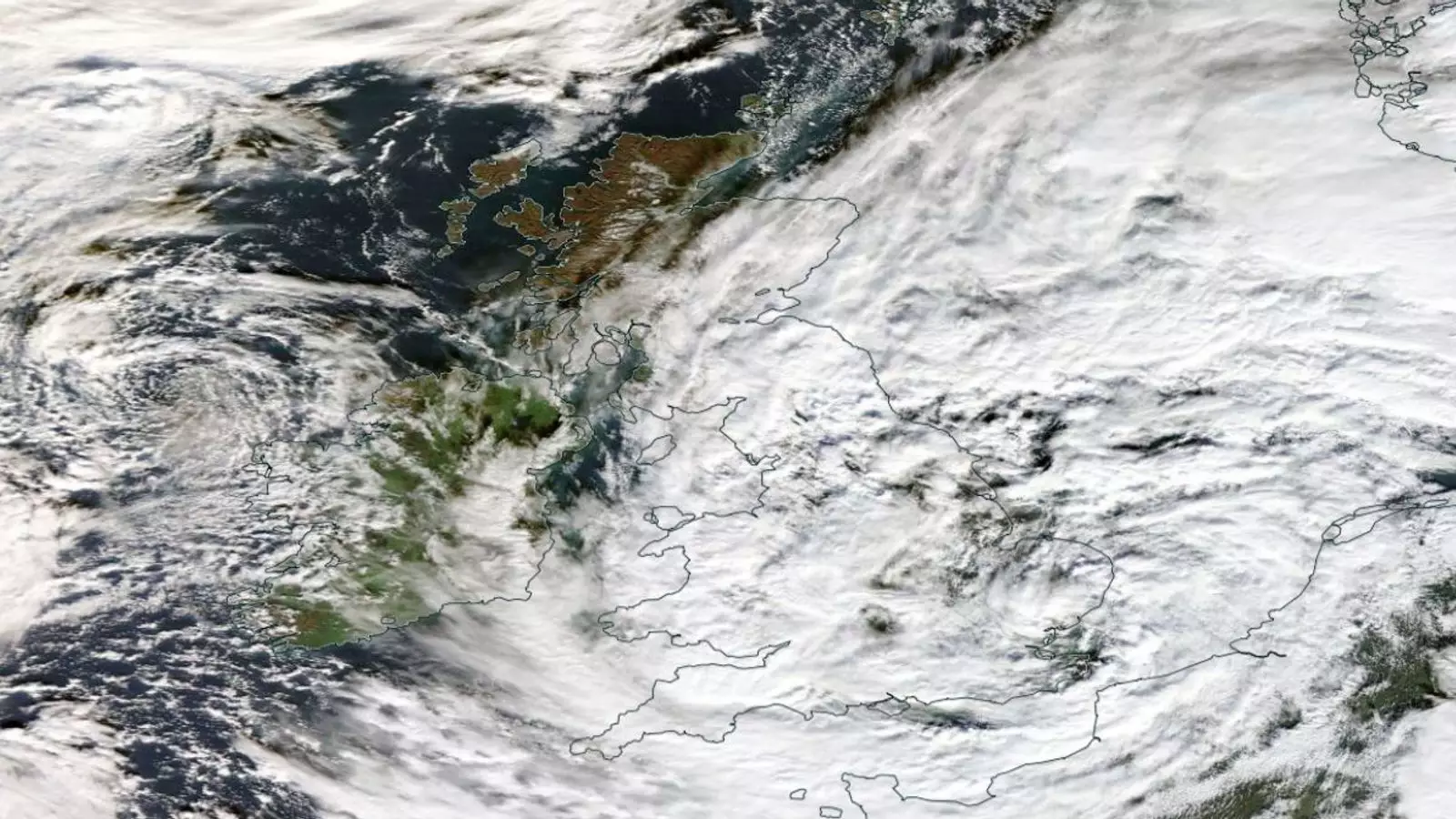The relentless rain has transformed vast stretches of the country into saturated sponges incapable of absorbing any more water. This has resulted in significant flooding across the affected areas. The ground’s inability to handle further rainfall means that even minimal precipitation can have devastating consequences. Storm Ciaran’s arrival has only exacerbated the situation, with flood alerts and warnings persistently increasing in number. The storm’s sluggish progress is responsible for this rapid escalation, as bands of heavy rain continue to encircle its center, persisting until Friday.
Southern England and Wales can expect rainfall of about 20-30mm (approximately an inch), with certain areas potentially receiving up to 60mm (2.5 inches). In contrast, northern Wales, the southern Pennines, northeast England, and eastern Scotland are predicted to experience up to 80mm (over three inches) of precipitation. Ordinarily, storms are expected during this time of the year. However, the jet stream’s current positioning has caused them to track further south than usual, impacting a larger population. Moreover, these storms tend to linger due to high-pressure systems impeding their progress. Compounding these factors is the unusually warm temperature of the Atlantic Ocean, leading to increased evaporation and subsequently heavier rainfall.
Regrettably, there is no respite in sight for those affected by the flooding. In fact, another storm is looming on the horizon, ready to unleash further wet weather over the coming weekend. This succession of storms is compounding the already dire situation and prolonging the suffering of those caught in its path.
Authorities are mobilizing their resources to address the flooding crisis. The Environment Agency has been actively monitoring and mapping the expanding areas of saturated ground in Wales and England. This enables them to provide timely flood alerts and warnings to affected communities. Local emergency services, including police, fire, and rescue teams, are on high alert and prepared to respond to any emergencies. Efforts are being made to bolster flood defenses and deploy assistance where needed.
These challenging times call for unity and community support. It is crucial for residents in flood-prone areas to remain vigilant and adhere to evacuation orders or safety guidelines issued by authorities. Ensuring the well-being and safety of loved ones should be the top priority. Additionally, offering assistance and support to neighbors and community members in need can make a significant difference during this crisis. Sharing resources, providing shelter, and contributing to relief efforts can collectively help mitigate the impact of the flooding.
While immediate response and recovery efforts are vital, it is imperative to address the underlying causes of these increasingly frequent and severe floods. Climate change and its effects on weather patterns, combined with inadequate infrastructure and urban planning, pose significant challenges. Long-term solutions must involve sustainable urban design, improved drainage systems, and effective flood management strategies. Investment in these areas is crucial to ensure the resilience of our communities in the face of future climatic uncertainties.
The country finds itself in the grip of unprecedented flooding brought on by the lingering storm, Ciaran, and the unfavorable alignment of weather patterns. With another storm approaching, it is essential to prioritize the safety of individuals and communities while also working towards long-term solutions. The resilience and support of communities, along with coordinated efforts from authorities, will be instrumental in overcoming this crisis and building a more resilient future.


Leave a Reply